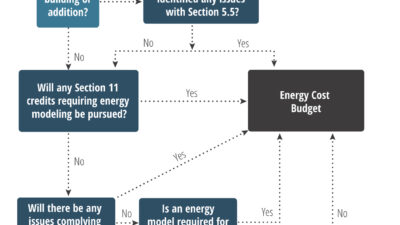The use of photovoltaic (PV) technology as a renewable energy source grew in 2010. Will this trend continue? PV projects can be challenging unless you know the ropes. Here a group of experts shed light on PV trends and how to approach these engineering projects.

Meet Our PV Roundtable Participants
- Shaun Landman, PE, LEED AP, principal, Arup, San Francisco, Calif.
- Donald J. Krompak, vice president, project management, Matrix Technologies, Inc., Maumee, Ohio
- Peter C. D’Antonio, PE, CEM, LEED AP, president, PCD Engineering Services, Longmont, Colo.
- Mike Hess, PE, LEED AP, principal, X-nth, Maitland, Fla.
General
Q: What is the ratio of ground-mounted (or pedestal) versus building integrated photovoltaic (BIPV) systems that you have installed?
Landman: The majority of the PV systems we have designed to date have been integrated into the building in some form. It really depends on what the client’s needs are. Usually our building clients are trying to maximize the footprint of the building on a compact site, which doesn’t leave much opportunity for ground-mounted systems. However, we are starting to experience increased participation in larger-scale ground-mounted PV projects. I estimate the ratio of systems is 80% building-integrated to 20% ground-mounted.
Krompak: At Matrix Technologies, all of our solar array projects are roof-mounted. Our power source and our inverters are located inside on the top floor of the building.
D’Antonio: Our ratio is 90% BIPV to 10% ground.
Hess: Almost all of our projects are not ground-mounted, but we also do not consider them BIPV. They are normally mounted on racks on the roof instead of having PV that is truly integrated into a product (such as a window).
Q: Describe a recent project in which you’ve used BIPV. Describe the engineering behind this project.
Landman: The California Academy of Sciences project in San Francisco has a BIPV component comprising crystalline modules integrated in to the perimeter of the roof structure. The BIPV elements are very prominent and provide an educational benefit to the many visitors. The perimeter of the roof is lined with high-efficiency panels, providing more than 213,000 kWh of clean energy annually—approximately 5% of the building’s total energy requirement.
Krompak: Matrix Technologies is currently in the design phase of a PV system for the Sherriff’s Crime Lab located in San Diego, California. The project is a 47 kW STC solar PV system. (STC means that ratings are derived under Standard Test Conditions.) The system will use Johns Manville BIPV CoolPly modules—a premanufactured, membrane integrated, tilted curb system. The curb system is heat-welded directly to the roof surface, allowing for easy attachment and a clean look, and does not require a ballasted system to hold the PV system to the roof. The system will consist of 195 solar modules as well an inverter and combiner that will be located in the existing facility. The estimated first-year energy output is 76,017 kWh.
D’Antonio: We installed three 100 kW building-mounted systems for a municipal client. The project involved tying into the existing building electrical system.
Q: Describe a recent project in which you’ve used ground-mounted or pedestal PV. Describe the engineering behind this project.
Landman: We are currently working on a ground-mounted application project for a university client. This particular client has a fair amount of open space that they are not planning to build on for quite some time and are looking at financially beneficial ways to use it. The PV system will feed into a number of different existing buildings on the campus. There were several factors that played significant roles in determining system sizes and interconnection configurations. The project has significant LEED aspirations, which indicated that a large array size would be preferred; however, challenges with utility interconnection and existing building electrical equipment required significant review to determine optimal system sizes.
Q: What are the geographic locations of the PV projects in which you have been involved?
Landman: Our PV projects are quite far-reaching in terms of geographic coverage of the U.S.—from Hawaii to New Jersey. But I would say a higher proportion of them are located in the western and northeastern states where electric utility rates tend to be on the higher side and where renewable energy incentive and rebate programs are more prevalent.
Krompak: Maumee (Toledo area), Ohio, is the location of our PV system. Matrix Technologies is currently working on the design of a PV system in San Diego, California.
D’Antonio: Our projects are in Colorado.
Hess: We’ve done projects mostly in Florida and California in the past, but state PV incentives have been unsteady and have made them difficult to implement in the U.S. We are now trying to push for renewable energy systems in the Caribbean where energy costs are usually three times as high as they are in the U.S.
Q: What are the typical PV project sizes and capacities with which you have been involved?
Landman: It varies quite a bit and definitely depends on the specific project needs. But the majority of the commercial building applied PV systems we have engineered are probably in the 50 kW to 300 kW range.
Krompak: The average size of our projects to date is approximately 15 kWh to 20 kWh, 100-200 panels, two strings, and two arrays.
D’Antonio: The typical size of our projects is 400-500 panels, 30-40 strings, and 100 kW.
Hess: Most of our projects have been smaller PV systems, in the range of 5 kW to 50 kW. There are several reasons for this. One limitation is the amount of roof area required since our PV technology is still not very efficient. Another limitation is first cost, so owners interested in PV can only afford a small token system. Some state incentives also have maximum amounts for one company, which limits the size. Finally, many owners just want to achieve one or two LEED points for renewable energy, which requires only a small-sized system.
Q: What’s the primary building type for which you’ve engineered PV systems? Do you see other building types using more PV in the future?
Landman: Historically, the most prevalent building types have been educational and public service buildings. We have successfully integrated PV systems into a number of university buildings of varying uses, and a handful of library and other civic projects. As the installation costs for PV systems continue to trend downward, we should see more buildings using PV in the future, regardless of type. Significantly, organizations with extensive property portfolios are starting to become more aware of the large-scale cost benefits that can be realized by energy-efficiency upgrades, and the inclusion of on-site energy generation across their entire portfolio.
Krompak: The PV projects Matrix Technologies has designed/implemented to date include our office building and a laboratory.
D’Antonio: The building types we’ve worked with are commercial, including retail, office, and government.
Hess: Buildings for energy utility companies and federal buildings seem to be using the most PV. Until PV becomes more cost-effective and efficient, we’re instead pushing for solar thermal technology and other energy-efficiency features that have better bang for the buck.
Q: What’s the main reason clients and building owners request PV systems?
Landman: Clients are showing interest in PV systems for several reasons. Foremost, as the installed cost of PV systems comes down, property owners are starting to realize actual energy cost savings from the installation of PV systems. Combined with varying ways of procurement, design-bid-build, PPA, and leasing, there are now more ways than ever for clients to justify and afford such systems. The second factor is that sustainability is on the forefront of most of our clients’ minds. There are very few projects we undertake in which a PV system is not at least studied during the initial stages.
Krompak: It seems most organizations want to reduce their energy costs. Some express a desire to be more green. In our case, both were true. We were aware of grant money available from the state of Ohio. That, coupled with the federal tax credit, meant the project was feasible from a cost/ROI standpoint.
D’Antonio: We have seen an interest in solar arise from public image and marketing perspectives. Also, in Colorado, large subsidies from utility companies along with tax benefits are making these systems attractive from a financial perspective. Clients can hedge against future rising electricity costs by entering into power purchase agreements, where a third party owns and operates the system and sells generated power to the owner at a fixed price for the term of the contract, typically 15-20 years.
Hess: LEED points.
Q: Based on your experience, what’s the traditional return on investment (ROI) for a PV system in a commercial building?
Landman: The typical ROI for a rooftop system is approximately 15 years. The most significant factors for determining ROI are initial cost and value of incentives. Both of these can have a wide range based on installation location and client type. For these reasons we’ve had projects with ROIs between 3 and 50 years.
Krompak: The ROI—measured only by direct energy savings—can be rather lengthy. In our experience, it’s 20-25 years. That’s after applying grants and tax credits.
D’Antonio: It depends; there really is no typical ROI. It depends greatly on location, utility costs, installation costs, the type of entity that owns the building (profit or nonprofit), and available utility rebates.
Hess: Usually ROI has been in the range of 15-25 years, depending on availability of state incentives.
Q: What growth (or reduction) in solar PV do you see in 2011? By 2015? 2020?
Landman: The price-per-Watt for PV continues to trend downward. I would expect this trend to continue in line with technology advancements, and as mass production techniques improve. However, this may be offset by other factors such as reductions in subsidies for renewable energy systems and fluctuating currency exchange rates. Overall, my prediction is that there will be increased demand globally for PV and that will help drive growth over the next 10 years.
Krompak: Growth may depend on the continued availability of government grants and tax credits. As government and private funding of research and development increase, however, the cost of ownership has been going steadily downward, and the output has increased from the same square footage. Our feeling is that these factors will contribute to an increase in the number of solar installations.
D’Antonio: Growth in the U.S. market has been consistent over recent years, driven by consumer interest in green technologies, concern about energy prices, and available financial incentives. In a 2009 report, the Interstate Renewable Energy Council predicted a 50%-100% growth in the number of grid-connected solar photovoltaic installs in 2010. Most growth is in the residential market. Future growth depends highly on local markets, state and federal legislation, and utility incentive offerings.
Hess: We don’t anticipate a lot of growth in 2011 because many of our clients have a large portfolio of buildings. Instead of placing some PV panels on one project, they can achieve a much higher return on their investment and much greater energy savings by retrocommissioning their older facilities (usually less than a 1-year payback) instead of using PV.
Q: What is the ratio of PV systems installed in existing buildings versus new construction?
Landman: In the commercial market, I would say that the majority of the systems are installed on new buildings primarily because PV systems are easier to integrate into the overall design of new build projects. I suspect the ratio is probably quite different in the rooftop application of smaller-scale systems on existing houses in the residential market.
Krompak: Our experience has all been with existing facilities.
Hess: 50/50.
Q: What are the specific methods for ensuring/tracking/monitoring PV array performance?
Landman: We haven’t had a customer say to us they don’t want to know how their system performs. They want to be able to verify whether actual output is in line with their expectations and what we as the engineers have told them. Some incentive programs offered by utility companies are tied to system performance and kWh production. These days, it is relatively easy and cost-effective to monitor your PV systems on a real-time basis via a web-enabled connection. In fact, monitoring of basic parameters is available as a standard feature on most inverters on the market today.
Krompak: Our experience has shown there are still myriad ways used today to collect data and report on system performance. Most inverters are connected via Bluetooth, Wi-Fi, Ethernet, or serial networks. There is a wide array of systems that collect the data including simple PC-based systems, "black boxes," and Internet-connected devices. The true value of the collection systems will be more obvious as one or two solutions begin to dominate the market. There appears to be no clear leader at the moment.
D’Antonio: There are numerous third-party systems for monitoring performance. Monitoring and control of photovoltaic systems is essential for reliable functioning and maximum yield of any solar electric system. The most simple inverter check and monitoring can be performed by reading values on the inverter display. Remote control and monitoring is more real-time and is typically performed by USB for local monitoring, and RS-485 and power line for inverter interconnection. For wireless connection, Bluetooth and Wi-Fi are most commonly used. Additional options like satellite-based monitoring are also available.
Q: What are the PV design factors that should be considered?
Landman: The amount of solar insolation [or irradiance—a measurement that quantifies the incident flux of radiant energy per unit area] is an important factor to understand and consider in the design of any PV system. We use simulation and modeling software to maximize system output and efficiency, in a cost-effective manner, optimizing the PV array orientation and layout. Another import design aspect to consider, in conjunction with the architect and building owner, is the aesthetic look and feel of the PV system when integrated into the building.
D’Antonio: Three factors significantly affect solar array performance and should be considered:
- Operating temperature. A solar cell’s efficiency is related to operating temperature. Consider reflective roofs and roof cooling systems to positively impact array performance.
- Solar intensity. Solar intensity depends upon the site location—its prevalent weather, pollution, latitude, and percent of shade. Try to eliminate array shading.
- Sun angle. PV cell output varies with respect to the sun’s angle of incidence. For a stationary array, maximum production will occur at a specific array tilt and azimuth.
Hess: Solar insolation, latitude, the direction of solar south (and magnetic declination), and shading by local terrain are some of the design factors that must be considered for every PV site. In desert climates, dust should also be considered because it could accumulate on the panels and impact the efficiency. In colder climates, snow may need to be considered. In hurricane-prone areas, there can be structural issues such as whether the PV panels will act like a sail and create wind loads on the structure, or if a flying object hits a panel.
Electrical
Q: Describe the integration of PV systems into the building’s electrical system. Provide one-line diagrams if applicable. What are the specific electrical system modifications/alterations necessary for accepting power from a PV system?
Landman: The designer must determine carefully where to tie the PV system into the building electrical system. The Code allows some latitude for the point of connection. But there are different implications to the overall system design depending on where in the system it occurs. There will always be some reconfiguration of the electrical system for existing buildings to facilitate the integration of PV regardless of whether the system is grid-connected or not.
Krompak: For the Matrix Technologies headquarters, the only modifications to the existing electrical system were the addition of a circuit breaker in our motor control center, wiring to the inverters, the addition of a net meter, and new wiring and junction boxes added to accommodate the solar arrays.
Q: What safety precautions do electrical engineers need to take when specifying PV systems into existing buildings?
Landman: The NEC (Article 690) covers the electrical requirements for solar photovoltaic systems with the goal of ensuring that PV systems are designed and installed safely. Often, local jurisdictions, fire agencies, and utility companies have their own requirements that designers and contractors need to be aware of and apply correctly.
Q: Besides the PV panels, what other electrical systems do you need to include in a building to adequately use PV systems? Describe the products or technologies.
Landman: In addition to the actual PV panels that produce the electricity, there are other components such as inverters, wiring systems, and mountings systems—often referred to as balance of system components—that make up a complete PV system. It is important to select and configure these components correctly to ensure the entire system operates properly and safely. For example, specifying the right size inverter is crucial to ensuring efficient system operation. Sometimes, it’s better and more efficient to use multiple single-phase inverters rather than a three-phase inverter, even though technically either would work.
Q: What building or facility infrastructure modifications are required to accommodate a PV system?
Krompak: Building infrastructure changes depend on many factors because each building is unique. In the case of the Matrix Technologies headquarters, we were able to make use of a portion of an existing shroud that surrounds our roof-mounted air-handling units. Being built on an adequate structural frame and covered with standing seam sheet metal, we were able to mount our solar panels directly to the shroud, which were fortunately at an optimum angle for our latitude.
Q: How does the size/electrical capacity of a PV array affect the number of inverters that must be used?
Krompak: The inverters have a rated capacity and should be matched to the power output of the arrays they are connected to.
Q: What are the electrical components that must be specified that are unique to PV systems?
Krompak: Our inverters are specifically designed for use in a PV system.
Codes and Standards
Q: What codes and standards do you need to consider when specifying a PV system in a commercial building? What standards are driving changes in the PV market?
Landman: First and foremost, one needs to be thoroughly familiar with Article 690 of the NEC, which covers solar PV systems. Additionally, there are several other articles in the NEC that are applicable. The IEEE 929 standard provides guidance for grid-tied systems—systems that operate in parallel with the utility. UL-1741 covers safety standards for many of the components that make up a complete PV system. It’s also imperative that designers review local codes that pertain to PV systems.
Hess: The LEED standard seems to be driving the size of PV systems. Designers should create their LEED energy models very early in project design to better predict the size of a PV system needed to earn LEED points.
Q: What are the labeling, marking, or signage requirements for PV installations?
D’Antonio: Marking requirements are covered under NEC 2008, Article 690. These relate generally to the PV modules, interactive system point of interconnection, the dc power source, and identification of the power sources present in the facility (i.e., grid-connected systems or stand-alone systems).
Module marking requirements are typically covered by the manufacturer. The dc power source shall be labeled by the installer at the disconnecting means, including items such as rated maximum voltage and current, maximum system voltage, short circuit current, and maximum-rated output current of the charge controller (if installed). Also, a permanent plaque must exist providing the location of the PV system disconnecting means if not located in the same location as the utility service disconnect.
Q: What specific certifications are required for PV designers/engineers? Installers?
D’Antonio: For installers, The North American Board of Certified Energy Practitioners (NABCEP) PV installer certification is a voluntary certification that provides a set of national standards by which PV installers with skills and experience can distinguish themselves from their competition. It is the crown jewel for installers. For engineers, the design must be developed under the guidance of a professional electrical engineer, who ultimately will stamp the design for review by the authorities having jurisdiction.



